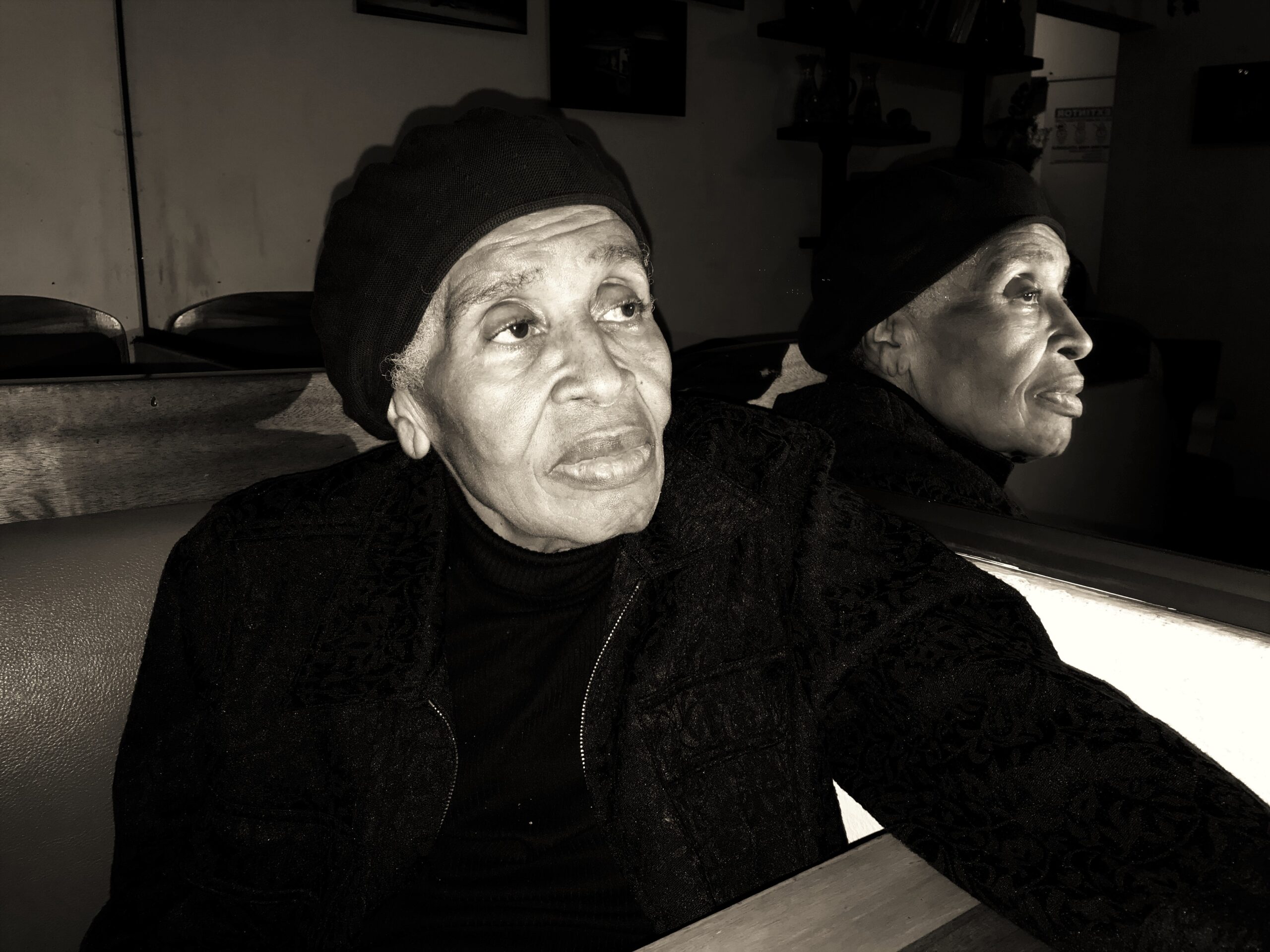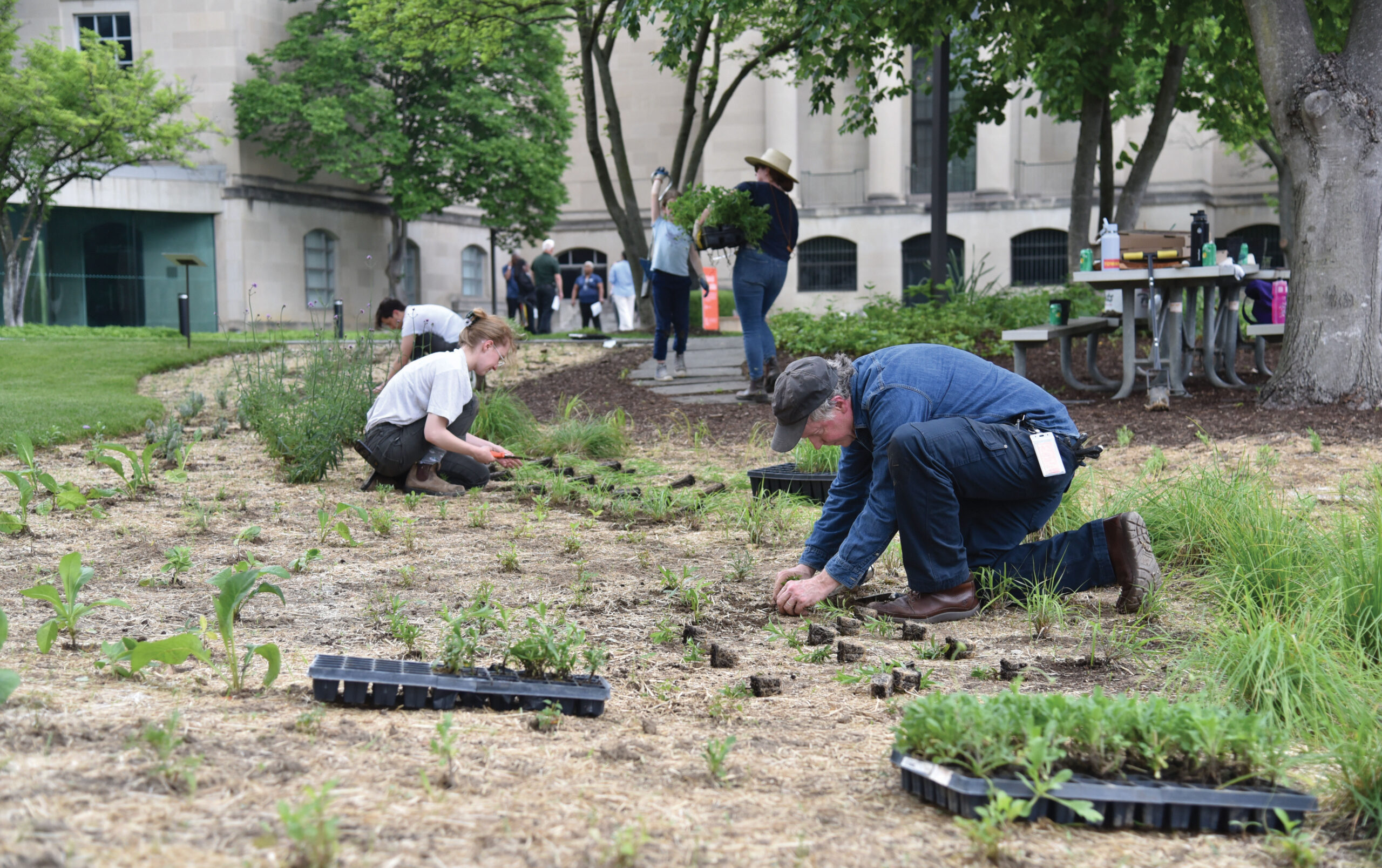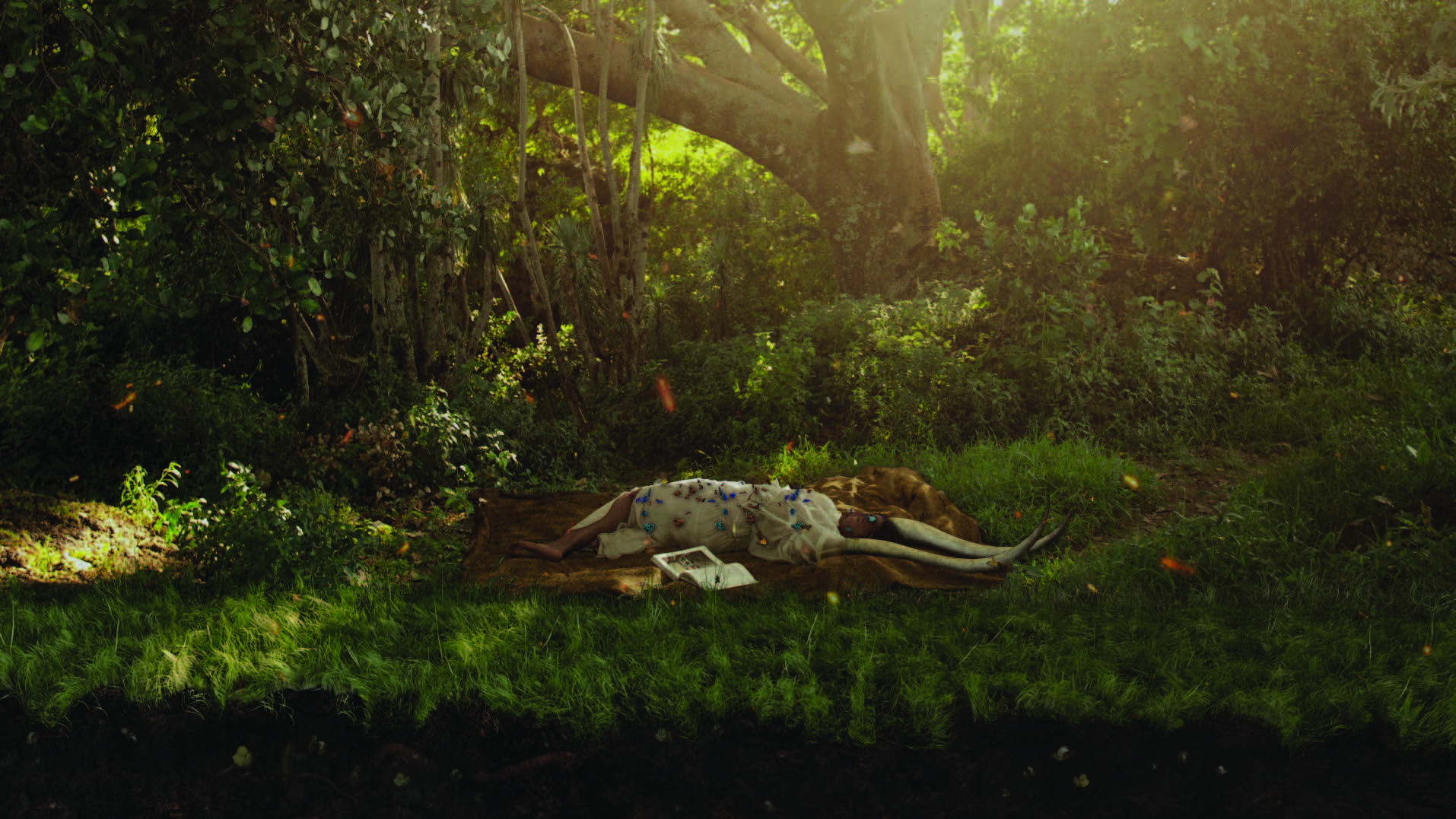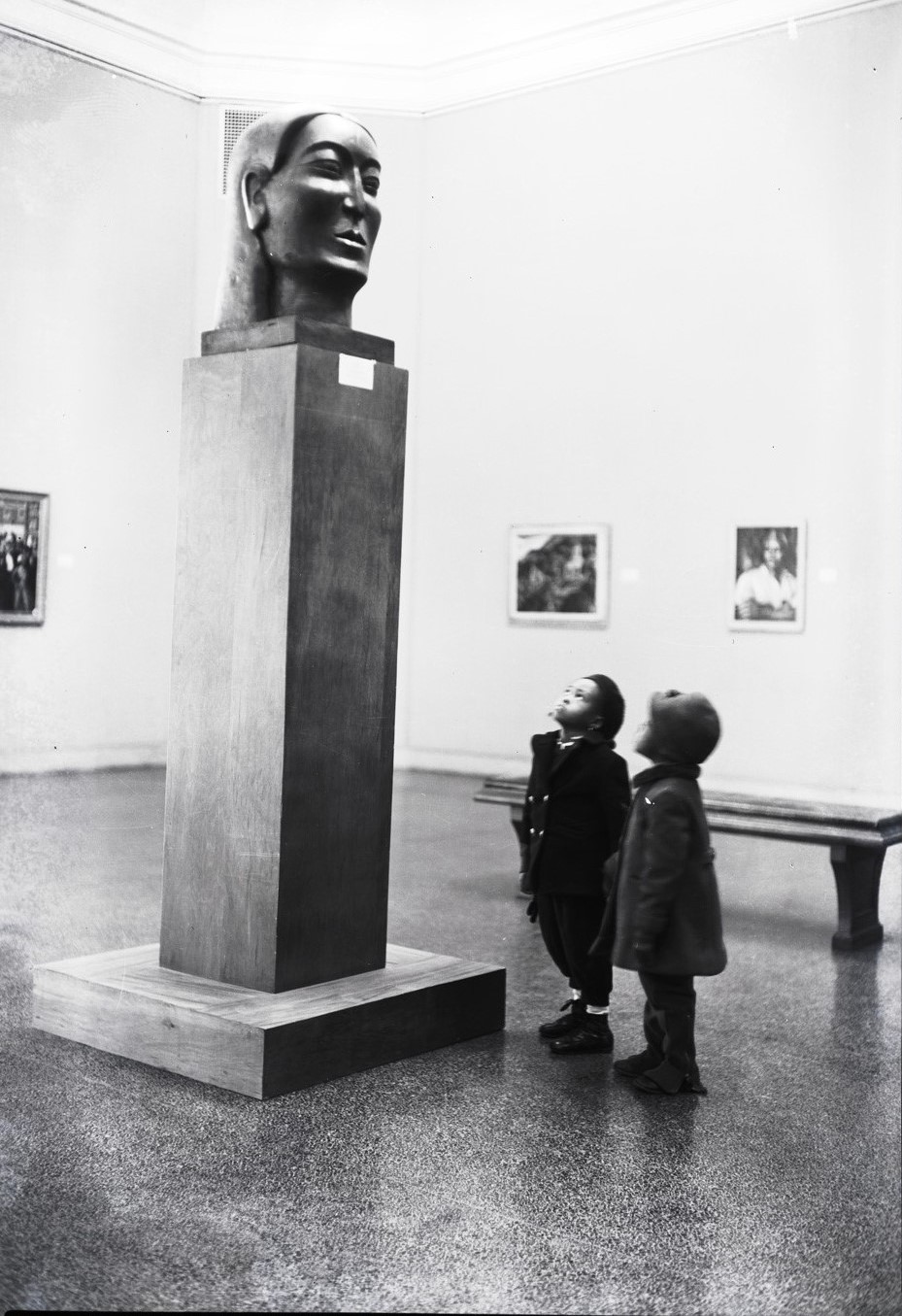
In the wake of the Great Fire that destroyed much of Baltimore in 1904, the city’s civic leaders rallied around the belief that a great city needed a great museum. From this beginning, the Baltimore Museum of Art has grown into a major cultural destination that cares for an internationally celebrated collection of more than 97,000 artworks and embodies a commitment to artistic excellence and social equity for the benefit of all communities throughout Baltimore and beyond. What follows is a selection of notable events that offers a look at the celebrated history of the BMA and its continued work to connect art to Baltimore and Baltimore to the world.
1914
Eight Baltimoreans—Dr. A. R. L. Dohme, Mr. Robert Garrett, Mrs. Henry Barton Jacobs, Mr. Michael Jenkins, Hon. Theodore Marburg, Gen. Lawrason Riggs, Mr. Henry Walters, and Dr. William H. Welch—incorporate the Baltimore Museum of Art. From the beginning, the proposed Museum’s educational function was essential. The BMA was to bring the fine arts into the lives of the citizens and their children.
1929
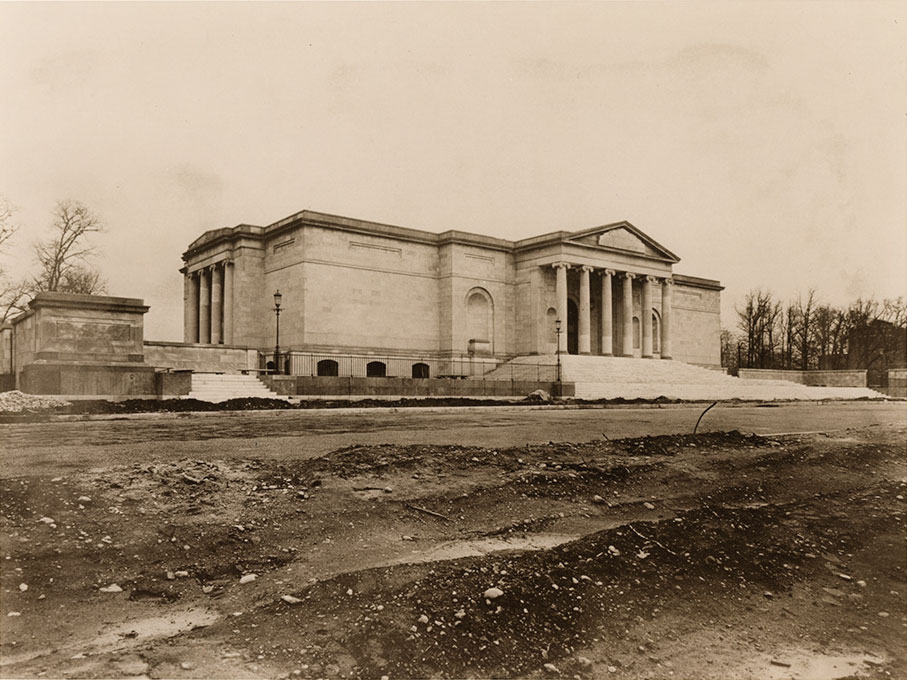
The BMA opens its neoclassical building. John Russell Pope (1874–1937), one of the most celebrated architects of the early 20th century, designed the building. An enthusiast for the Beaux-Arts style, Pope is also responsible for the American Museum of Natural History in New York City; additions to the British Museum and the Tate Gallery in London; and the American Institute of Pharmacy building, Constitution Hall, the National Archives building, the National Gallery of Art, the Scottish Rite Temple, and the Thomas Jefferson Memorial in Washington, DC.
Visitors are greeted by a monumental cast of Auguste Rodin’s The Thinker, given to the BMA by Founding Trustee Jacob Epstein, a successful Baltimore merchant and philanthropist whose collection of Old Master paintings is presented as one of the opening exhibitions. The centerpiece is Sir Anthony van Dyck’s monumental Rinaldo and Armida (1629), commissioned for England’s King Charles I.
The BMA’s education department—one of the earliest for a U.S. museum—expands with story hours and art classes. Attendance for educational programs will grow to 15,000 children in 1930–31.
1930
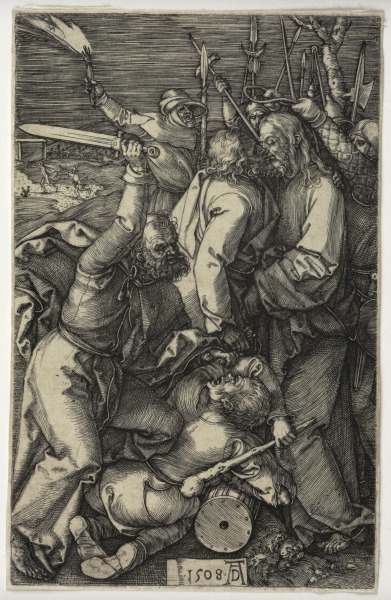
Miss Blanche Adler gives to the Museum 150 prints, adding significantly to the BMA’s permanent collection. Her gift also includes a fund for purchasing additional prints.
1932
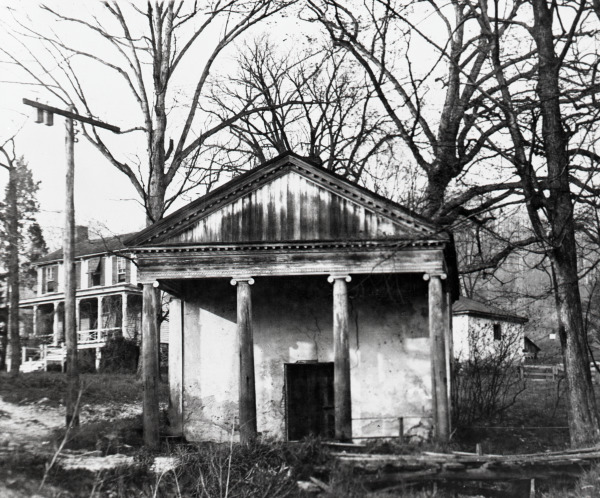
W. J. O’Brien gives the BMA the Goodloe Harper Spring House, a striking example of Greek Revival architecture. The structure is moved to the Museum grounds from Oakland, the nearby country estate of Robert Goodloe Harper (1765–1827), one-time United States Senator from South Carolina and son-in-law of Charles Carroll, Maryland signer of the Declaration of Independence.
1933
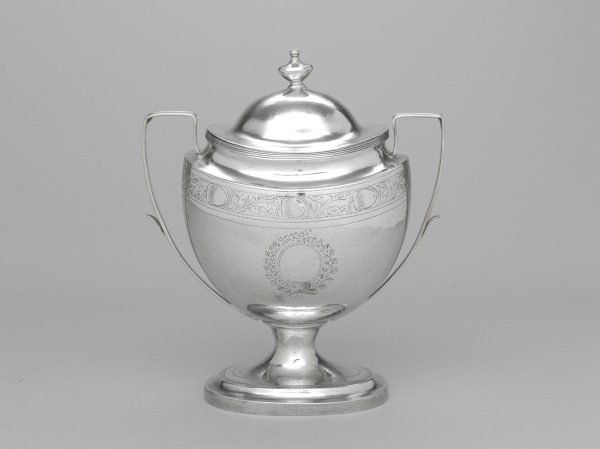
Mrs. Miles White Jr. gives the Museum an extensive collection of silver. Included are other important works of art from colonial Maryland.
1935
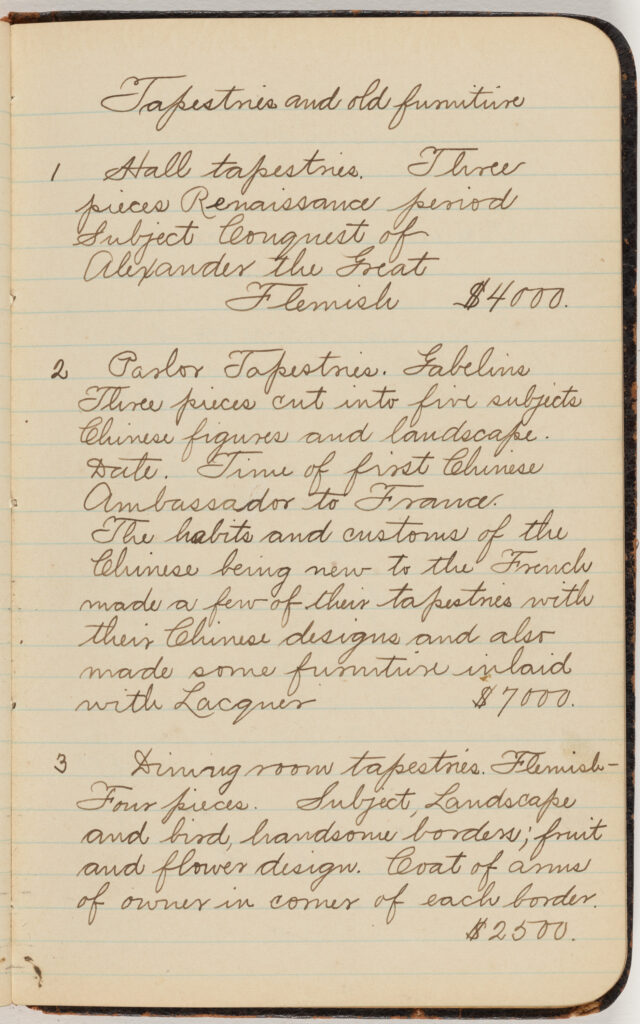
A page from Mary Frick Jacobs’ handwritten notebook, in which she recorded details about her collection. Dr. Henry Barton and Mary Frick Jacobs Papers, Box 7, Folder 7. JP7.7.
Founding Trustee Mary Frick Jacobs promises her collection to the Museum. By 1937, a new wing, designed by John Russell Pope, will feature the Jacobs collection of European masterworks by Sandro Botticelli, Jean-Baptiste-Siméon Chardin, Rembrandt van Rijn, and Elisabeth Louise Vigée Le Brun.
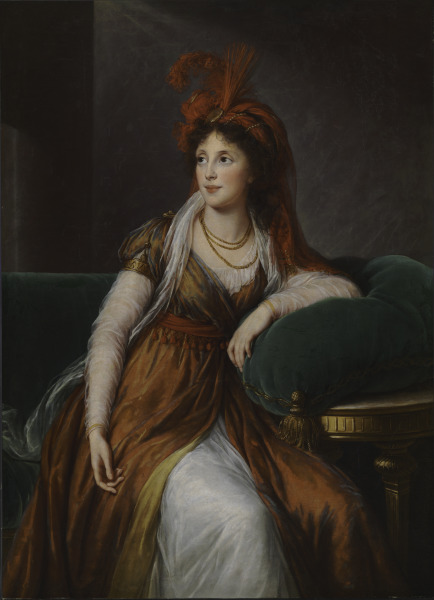
1936
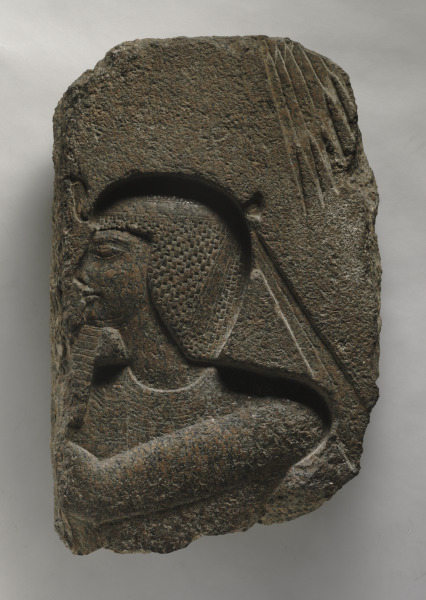
The BMA presents one of the nation’s earliest exhibitions of African art. The Museum’s African art collection began with a dozen works from Egypt and now holds more than 2,000 objects from nearly every African country.
1937
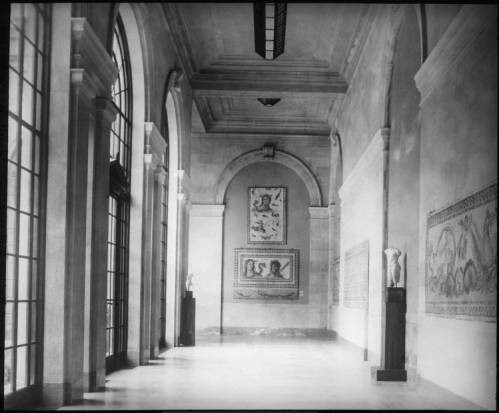
Ancient Antioch mosaics are installed. Founding Trustee Robert Garrett led the BMA’s participation in archaeological excavations in partnership with the Musées Nationaux de France (Louvre), Worcester Art Museum, Princeton University, Harvard University’s Fogg Art Museum, and Dumbarton Oaks, in agreement with the Syrian Department of Antiquities, and subsequently with the Hatay government of Turkey.
1939
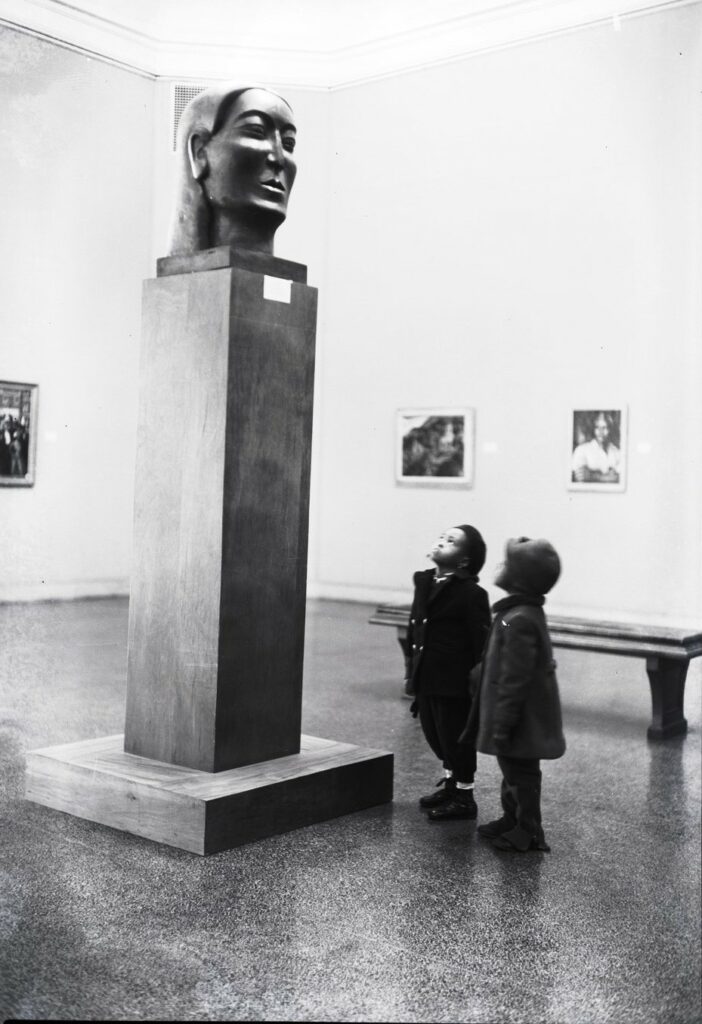
The BMA presents the Harmon Foundation’s exhibition of works by contemporary Black artists. Seen by approximately 12,000 people during its two-week run, it is considered one of the most successful shows that season.
1942
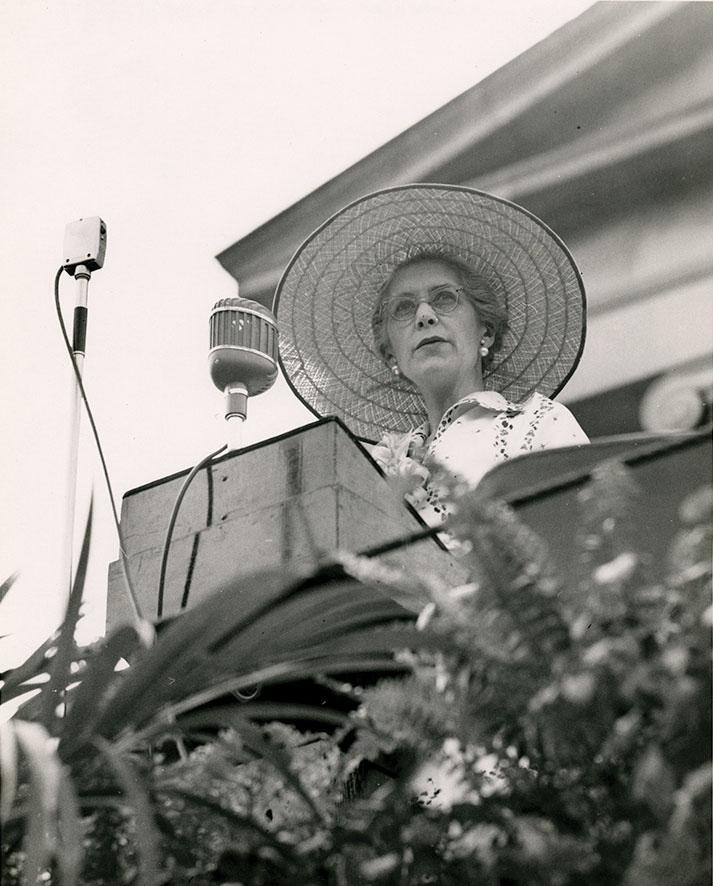
Adelyn D. Breeskin is appointed Acting Director from 1942 to 1947, then Director from 1947 to 1962. Breeskin played a major role in expanding the breadth of the BMA’s collection and the building to house it. She also secured the Museum’s international reputation by ensuring Claribel and Etta Cone’s collection would stay in Baltimore.
1946
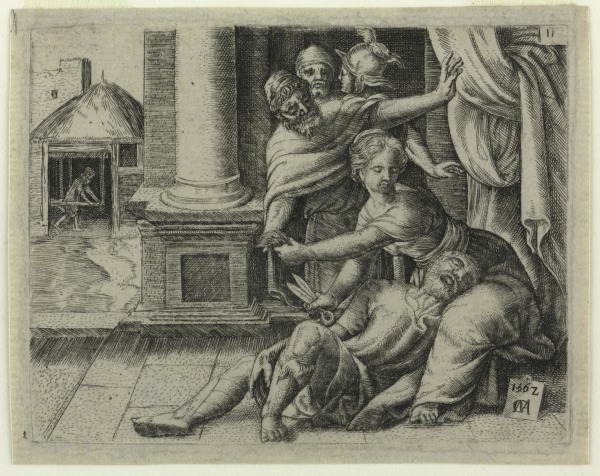
The BMA receives the vast collection of Baltimore industrialist and banker T. Harrison Garrett. Works by Albrecht Dürer, Francisco Goya, and Rembrandt van Rijn are among the more than 20,000 engravings, etchings, and woodcuts. These works range from the late 15th century through the late 19th century. His sons, John W. Garrett and Robert Garrett, likewise become exceptionally generous donors to the Museum.
1950
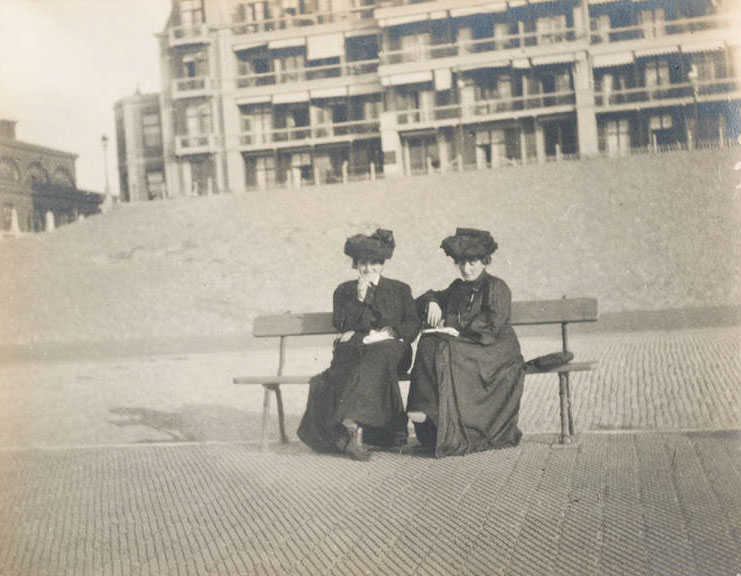
Dr. Claribel and Miss Etta Cone’s extraordinary bequest of 3,000 objects is formally accessioned by the Museum. When Claribel died in 1929, she bequeathed her collection to her younger sister Etta, suggesting that it be given to the BMA “if the spirit of appreciation for modern art in Baltimore should improve.” In addition to more than 600 works by Henri Matisse and masterpieces by Paul Cézanne, Pablo Picasso, and Vincent van Gogh, the Cone Collection includes paintings; sculptures; more than 1,000 prints and drawings and illustrated books; a large group of textiles; jewelry, furniture, and other decorative arts; African art; Japanese prints; antique ivories and bronzes; and the sisters’ personal library and archives. Etta also gave funds to build a new wing to house the collection.
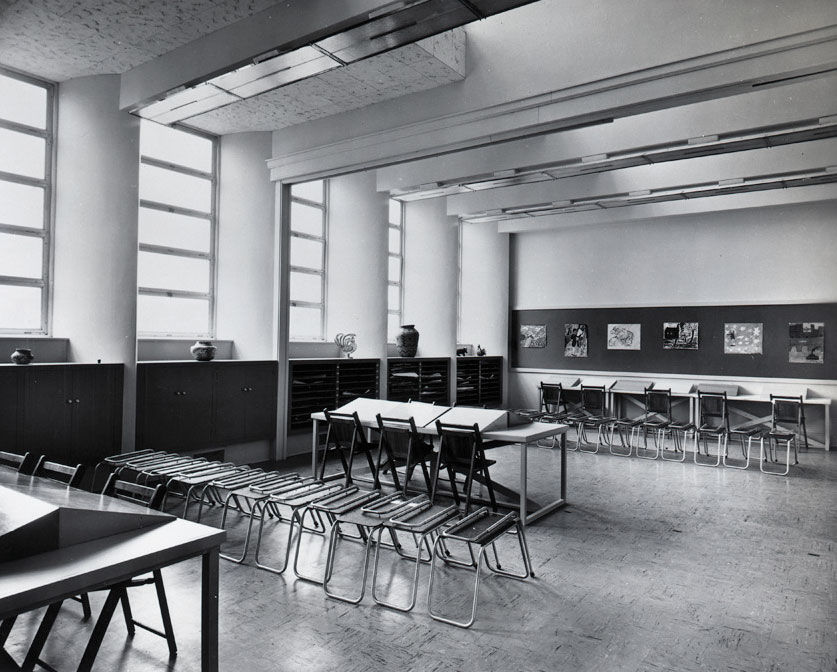
The Saidie A. May Young People’s Art Center opens. The center makes the BMA one of the first museums in the country to have a large space—with galleries, classrooms, art studios, and an auditorium—dedicated to children’s education. May’s 1951 bequest would include nearly 400 paintings, sculptures, ceramics, textiles, furniture, and decorative art objects from many periods and many lands, but her focus on 20th-century European masters remained.
1951
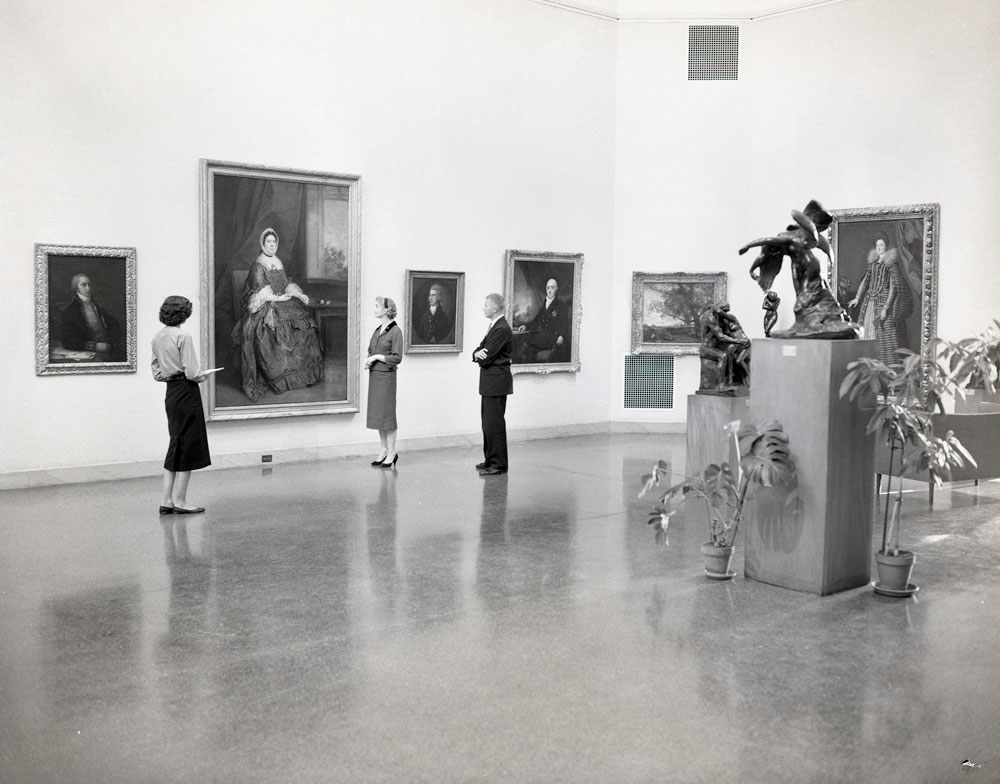
The collection of Trustee Jacob Epstein is formally added to the Museum as part of his bequest. In addition to the Van Dyck masterpiece, the Epstein collection contains outstanding paintings by Frans Hals, Thomas Gainsborough, Raphael, Sir Joshua Reynolds, and Titian, as well as sculpture by Auguste Rodin.
1958
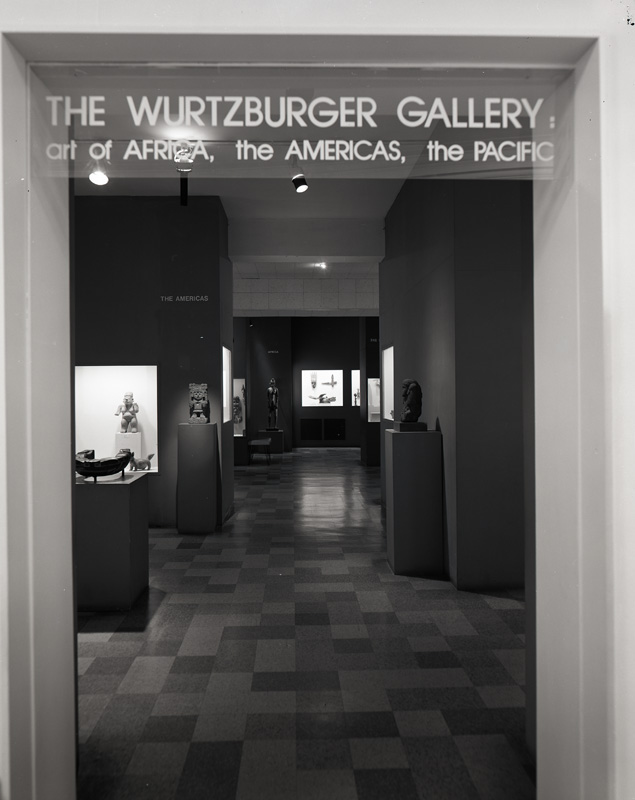
PC_BG_07_36_002.
Alan and Janet Wurtzburger’s collection of African sculpture, Oceanic art, and Pre-Columbian and Native American art goes on display. The Baltimore philanthropists began collecting works from African and Oceanic countries and giving them to the BMA in order to acquaint the people of Baltimore with artistic expressions Indigenous cultures from around the world. The couple ultimately acquire more than 400 outstanding examples and also serve as Trustees for many years.
1960
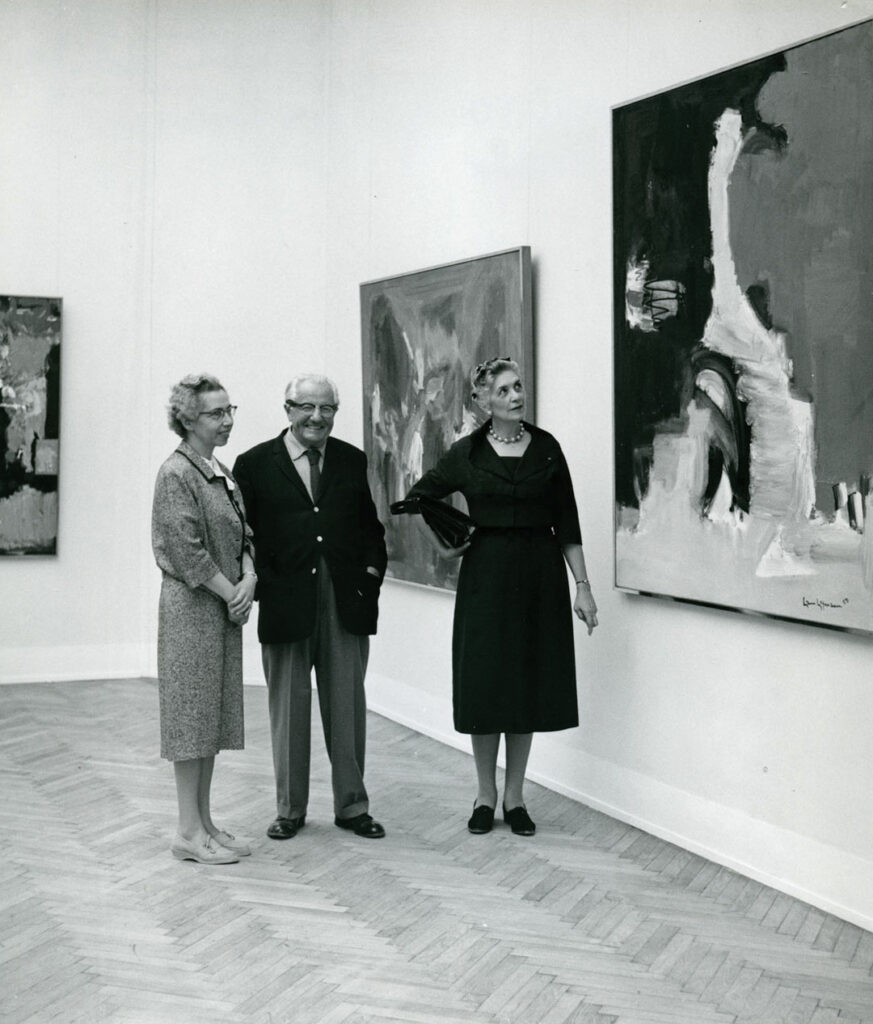
BMA Director Adelyn Breeskin commissions the 1960 U.S. Pavilion for the Venice Biennale. Breeskin selects Abstract Expressionist artists Hans Hofmann, Franz Kline, Philip Guston, and Theodore Roszak for the world’s most prestigious international exhibition of contemporary art.
1972
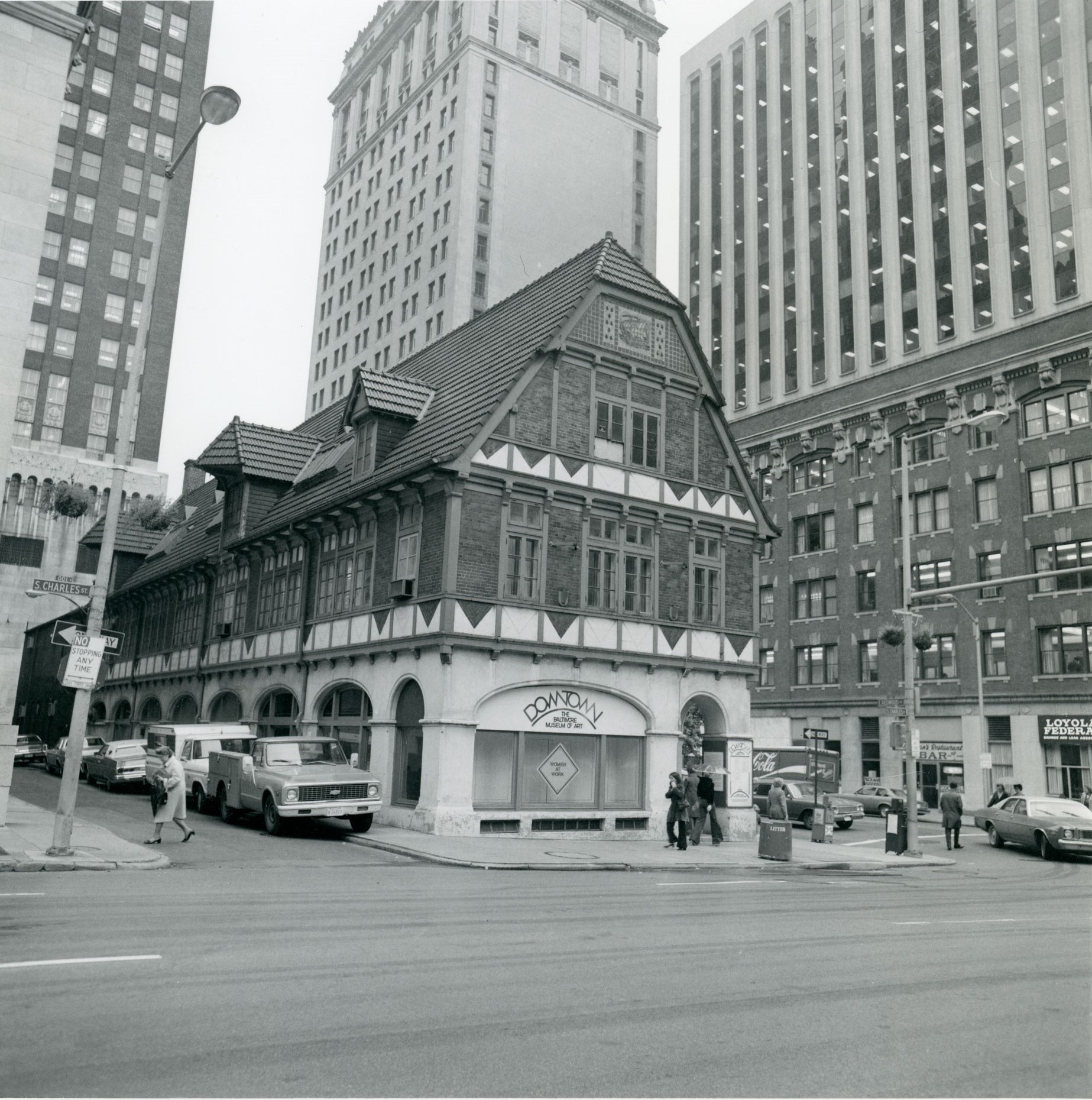
The Downtown Gallery opens. Roughly 36,000 people visited the Downtown Gallery in its first year, many of them office workers stopping in during their lunch breaks.
The Traveling Exhibition Services program begins. The BMA presented per year approximately 61 four-week exhibitions of about 30 objects at Maryland community cultural centers, college and university art galleries, libraries, banks, schools, and shopping malls.
1980
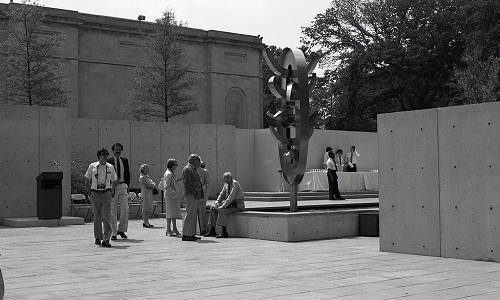
PC_EV_05_03_Wurtzburger Dedication 1980.
The Alan and Janet Wurtzburger Sculpture Garden opens. Its 19 major works of early modern sculpture range from August Rodin’s Balzac, which dates from the late 19th century, to works created by Isamu Noguchi and Alexander Calder in the 1950s and 1960s.
1982
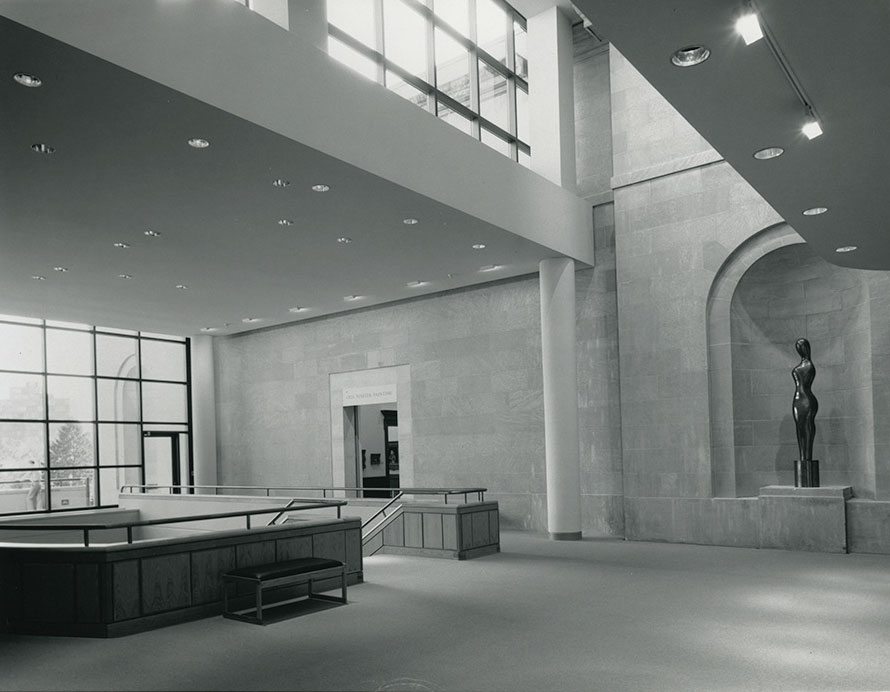
The East Wing opens. The new wing has expansive new galleries and a 363-seat auditorium to accommodate larger exhibitions, films, and performances. The new wing also encompasses the Murray J. Rymland Terrace, an expanded Museum Shop, and a full-service restaurant overlooking the Wurtzburger Sculpture Garden. Concurrently, the museum expands galleries for the arts of Africa, the Americas, and Oceania. The Museum begins charging admission for the first time in its history.
The BMA begins Close Encounters, a free program for fourth graders in Baltimore City Public Schools. The program enhances visual literacy and critical thinking skills using works of art in the BMA’s collection. More than 30,000 students have participated in these museum tours and classroom experiences, which continue today.
1987
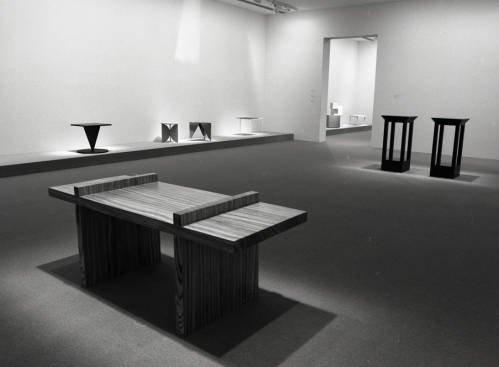
PC_EX_38_20_Scott_Burton_1986.
The Museum mounts an exhibition devoted to the work of Scott Burton. One of Burton’s major interests was functional art (i.e., making furniture-as-sculpture). As a result, visitors can touch, sit on, and interact with many objects in this show.
1988
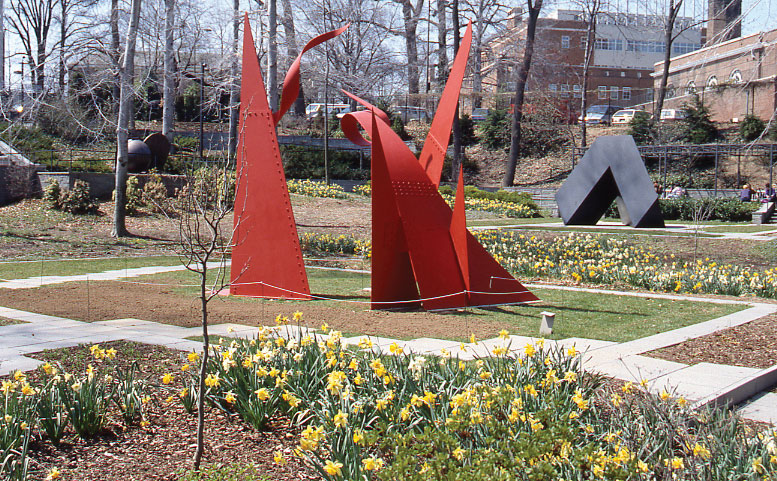
The Ryda and Robert H. Levi Sculpture Garden opens. The collection boasts 14 artworks from the latter half of the 20th century and features major examples by Alexander Calder, Anthony Caro, Ellsworth Kelly, Joan Miró, Louise Nevelson, Isamu Noguchi, and Tony Smith.
The BMA acquires the George H. Dalsheimer Collection. The collection includes more than 600 vintage prints by major photographers of the 20th century, including Ansel Adams, Harry Callahan, Robert Frank, Aaron Siskind, and Edward Weston. These works arrive as a partial gift and purchase with exchange funds from the Edward Joseph Gallagher III Memorial Collection; a decade later, Dalsheimer will give the BMA an additional 300 photographs from his collection.
1994
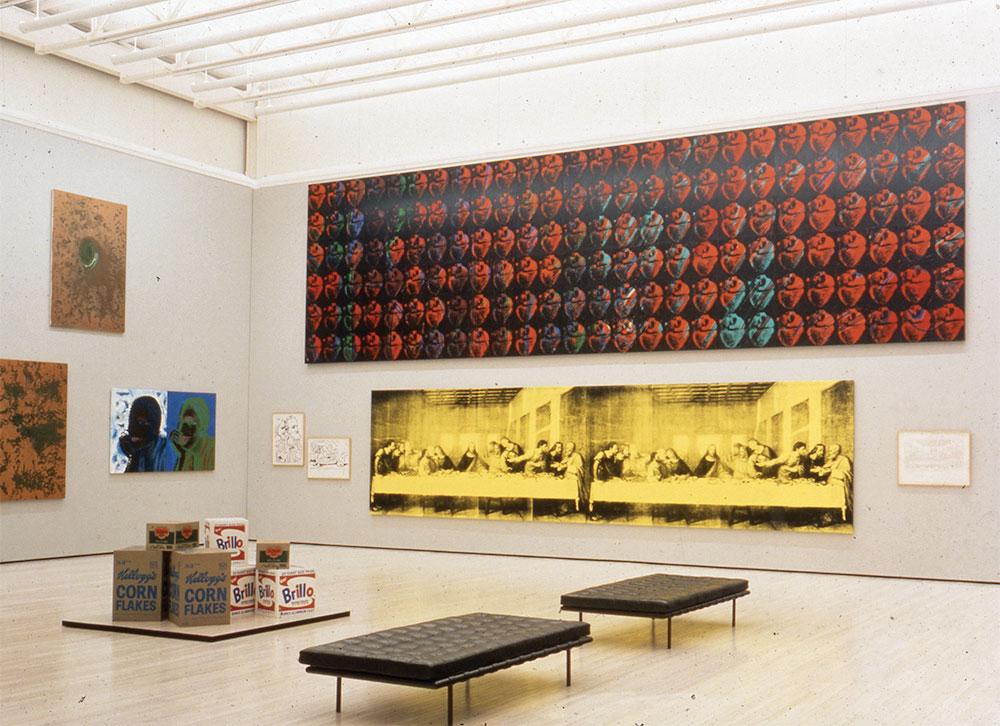
The West Wing for Modern Art opens. The wing features 16 galleries for the display of a diverse and growing collection of post-1945 art, featuring major works by Dan Flavin, Donald Judd, Barbara Kruger, Susan Rothenberg, Mark Rothko, and Andy Warhol.
1996
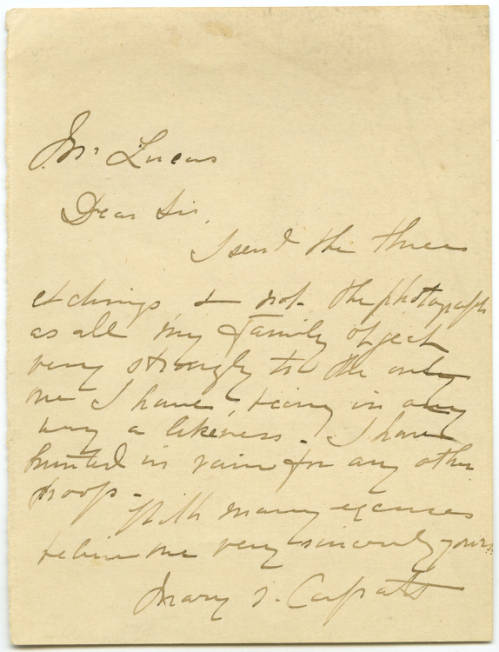
Lucas Papers, Box 3, Folder 25, LP3.25
The BMA and the Walters Art Museum purchase the acclaimed George A. Lucas Collection of 19th-century French art. George A. Lucas was an art dealer whose holdings encompassed 20,000 objects, including the finest representation in the U.S. of the graphic work of Honoré Daumier, Eugène Delacroix, Édouard Manet, and James McNeill Whistler. The State of Maryland and the generosity of numerous individuals in the community also help make possible the purchase of this collection, which had been on extended loan for more than 60 years.
2006
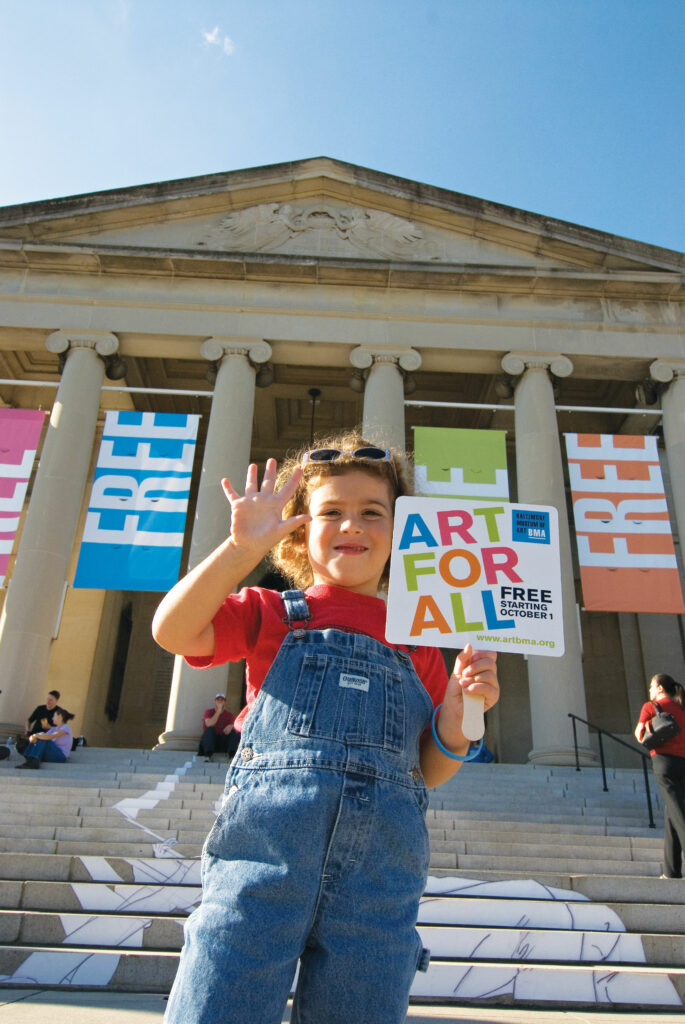
The BMA begins offering year-round free general admission for the first time in nearly two decades, thanks to initial government support and endowment gifts. Ongoing support is provided from the Cohen Family Fund for Free Admission, Lord Baltimore Capital Corporation, Mary J. and James D. Miller, James S. Riepe Family Foundation, and the DLA Piper Fund.
2007
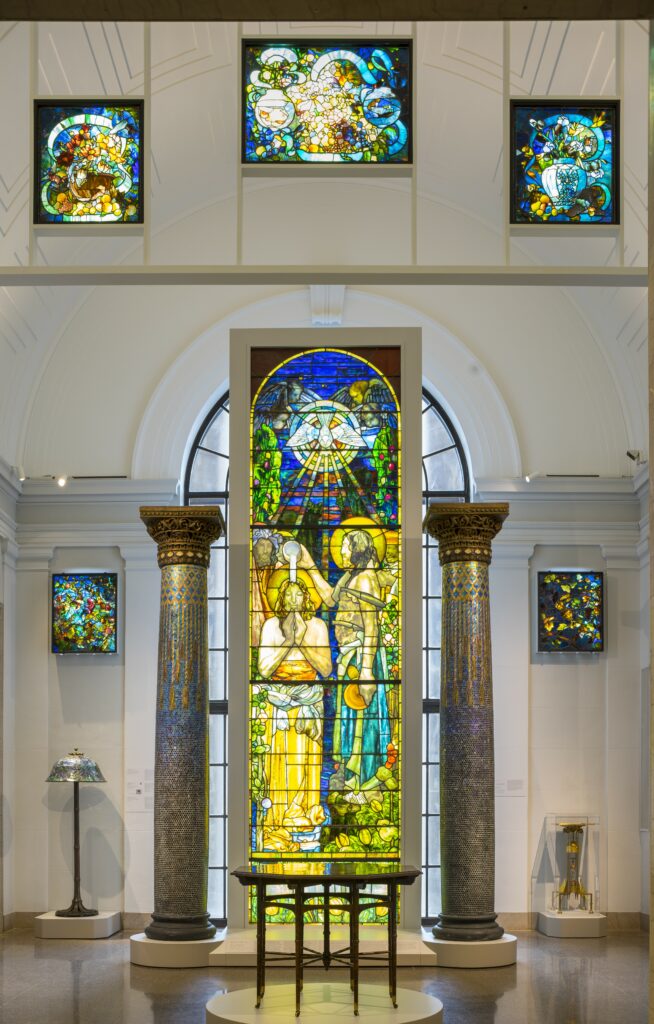
Mitro Hood.
A $10 million promised gift from Miss Dorothy McIlvain Scott endows operations and programs for the newly designated Dorothy McIlvain Scott American Wing. This transformational gift is the largest individual gift in the Museum’s history. Later that year, a $5 million gift from the Dorothy Wagner Wallis Trust created an endowment for the BMA’s Director position.
2008
In a New Light: The Campaign for The Baltimore Museum of Art begins. The most ambitious philanthropic campaign in the Museum’s history would raise more than $81 million and expanded the collection by 4,000 gifts of art.
2012
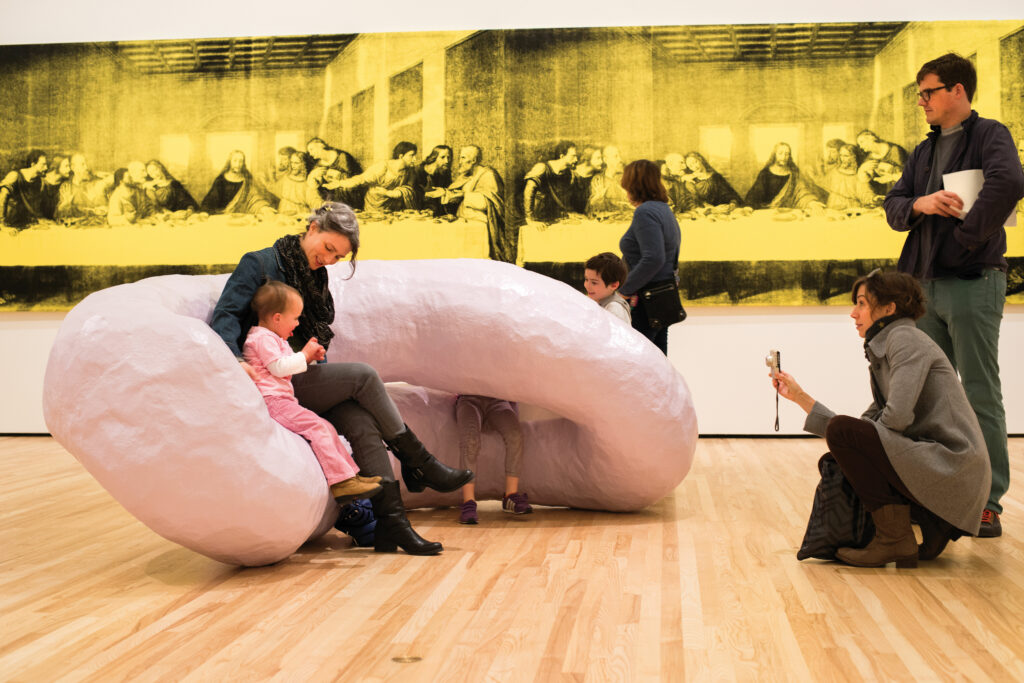
The newly renovated Contemporary Wing reopens. The reimagined wing offers state-of-the-art lighting, two new interactive galleries, a new black box gallery, and the Museum’s first mobile art guide for smartphones.
2014
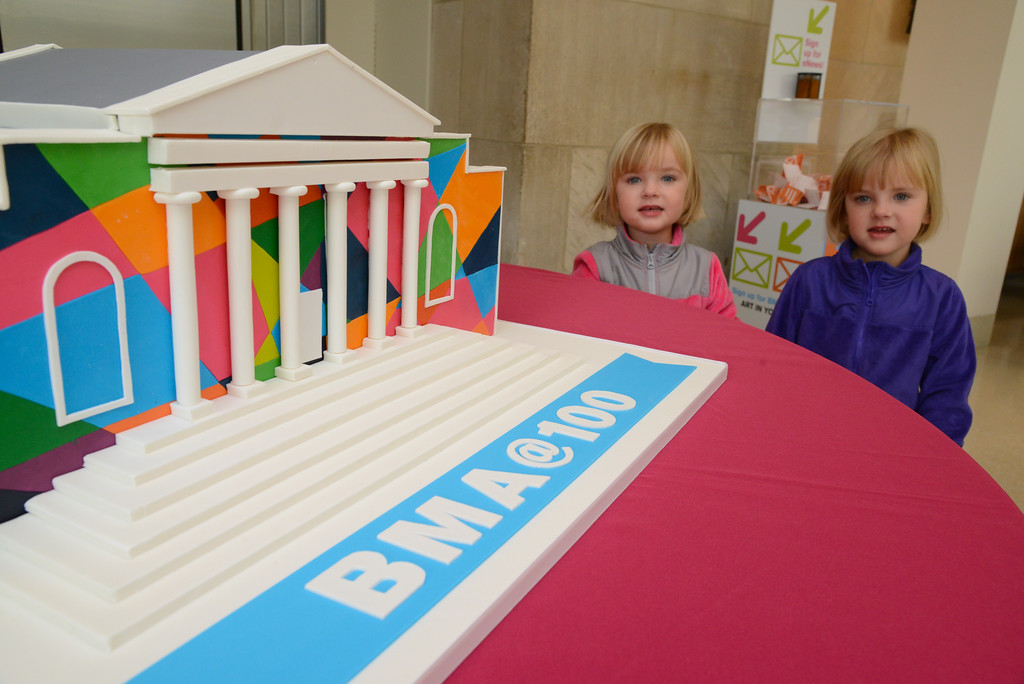
The BMA celebrates its 100th Anniversary by reopening the Merrick Historic Entrance, which had been closed since 1982, and unveiling dramatic renovations to the Dorothy McIlvain Scott American Wing, Zamoiski East Entrance, East Lobby, and BMA Shop.
2015
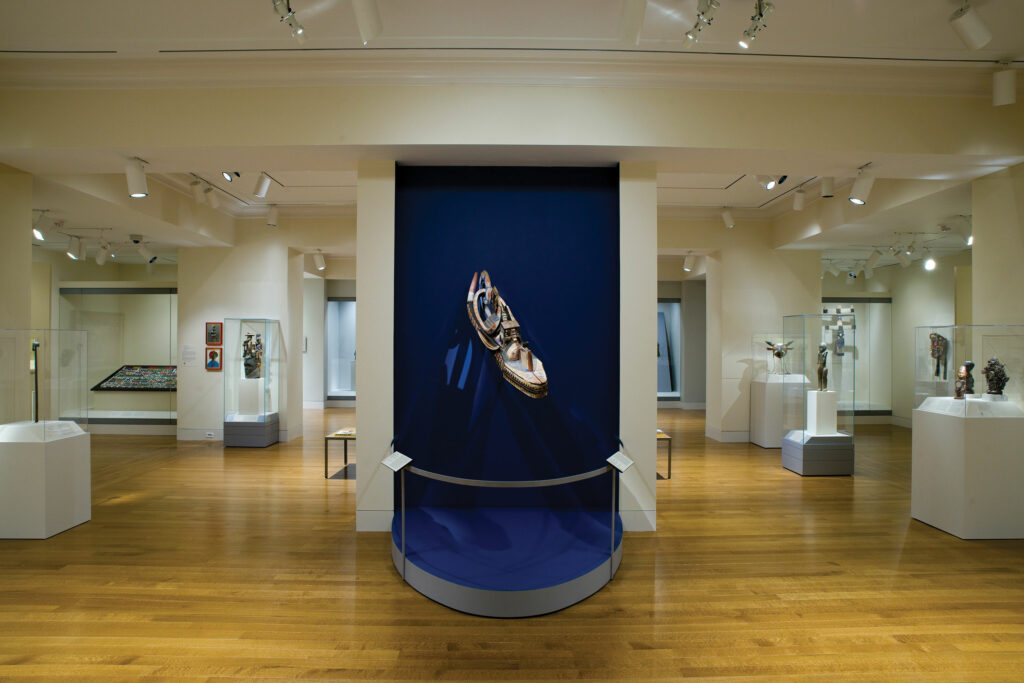
Renovated African and Asian art galleries reopen. These new presentations represent expansions from previous installations, more than tripling the gallery space for African art and doubling the galleries for Asian art.
The Patricia and Mark Joseph Education Center opens. Areas include a new exhibition space, commons area, art-making studio, docent room, and school group entrance and orientation foyer.
2016
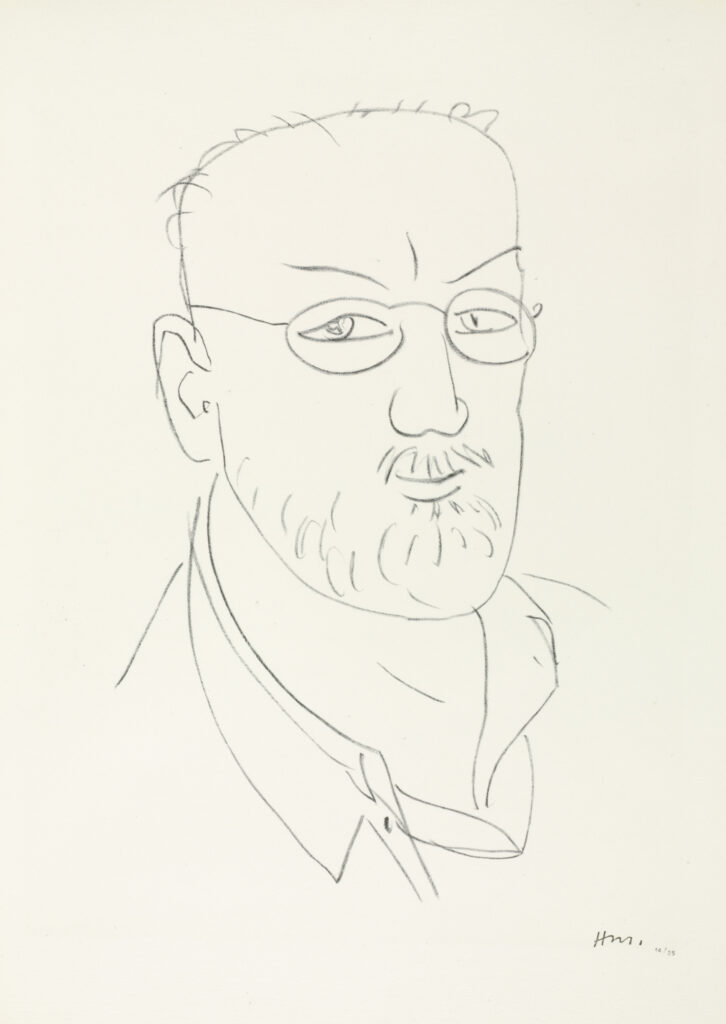
the Pierre and Tana Matisse Foundation, BMA 2016.113.45.
The BMA receives a gift of 85 prints from the Pierre and Tana Matisse Foundation. The addition of these works from the foundation of the artist’s son gives the Museum nearly 1,200 works by Henri Matisse, making it the largest public collection of the French master.
2017
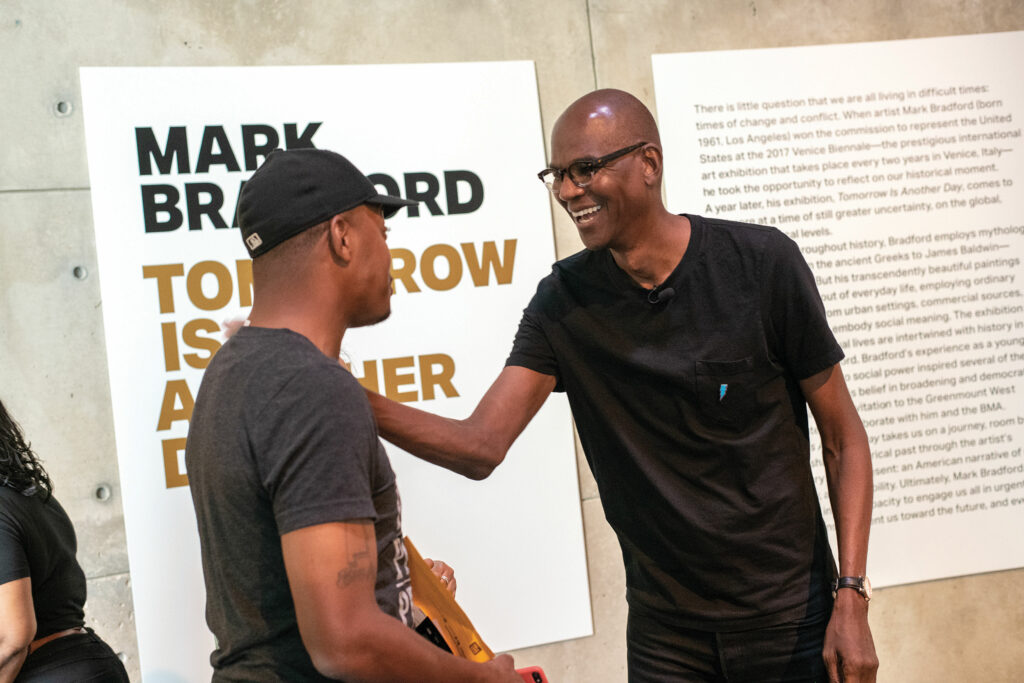
The BMA co-commissions the U.S. Pavilion for the 57th Venice Biennale with the Rose Art Museum. The presentation of Mark Bradford: Tomorrow Is Another Day is seen by more than 370,000 visitors from May through November.
2018
The BMA redefines its mission to make artistic excellence and social equity the basis for all programmatic and administrative activities. The same year, the Museum deaccessions paintings by Franz Kline, Robert Rauschenberg, and Andy Warhol, among others, raising $16.2 million through public and private auctions to acquire more works by women and artists of color. Among the acquisitions made with those funds are works by Isaac Julien, Wangechi Mutu, Amy Sherald, Carrie Mae Weems, Jack Whitten, and Lynette Yiadom-Boakye.
2019
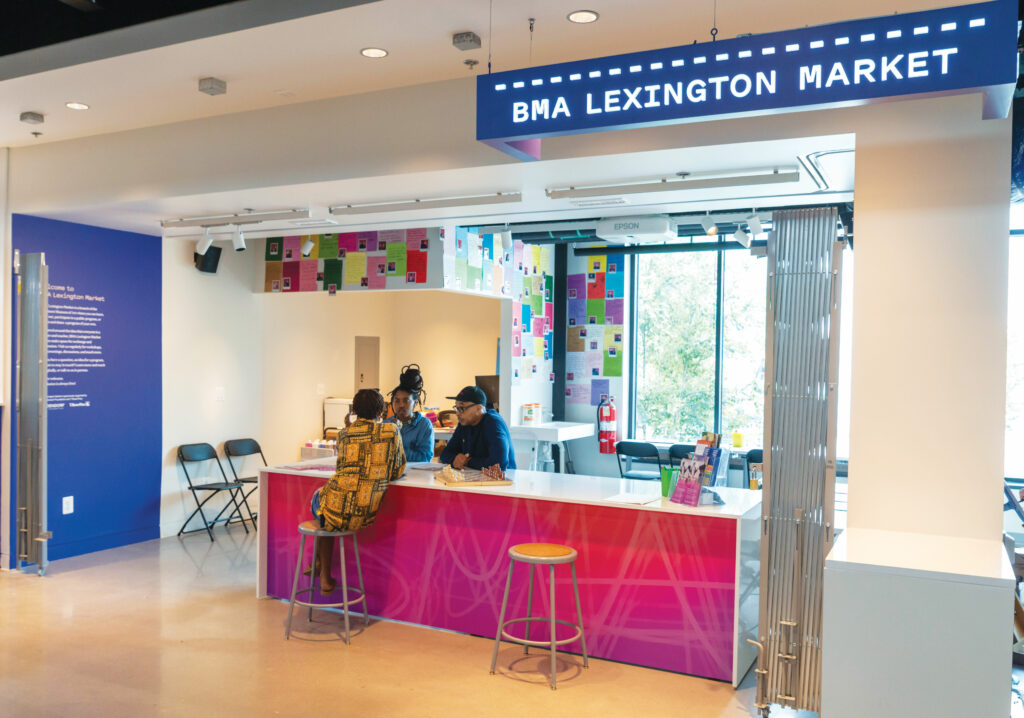
BMA Lexington Market opens in the world’s oldest continually operating public market. The space hosts a variety of art programs and collaborative activities presented in partnership with other organizations and individuals.
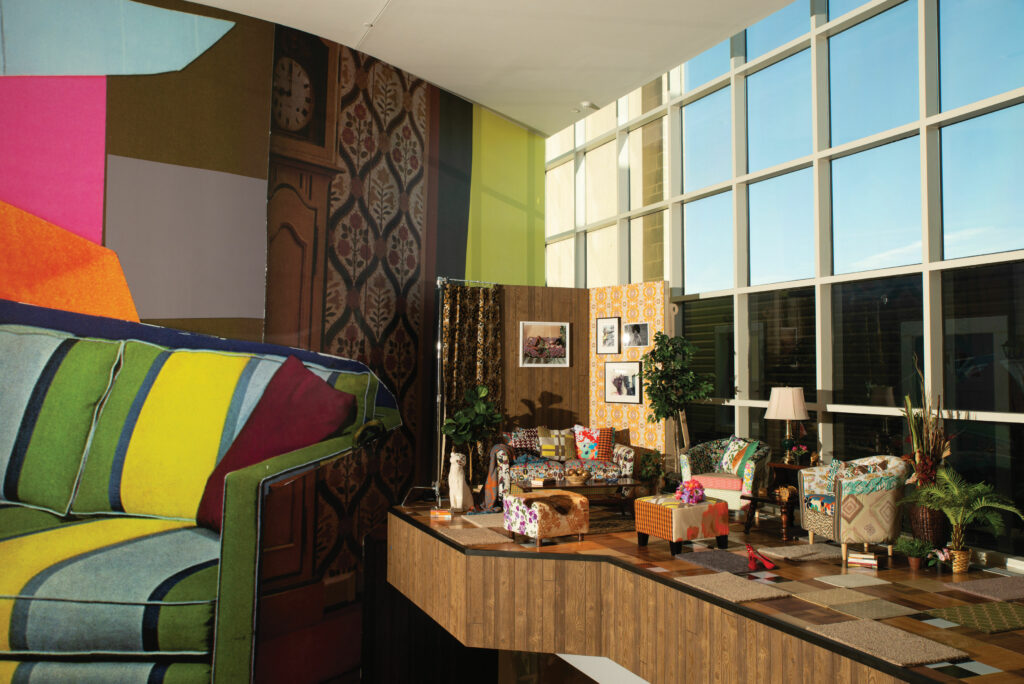
The inaugural Robert E. Meyerhoff and Rheda Becker Biennial Commission debuts with a major installation by internationally renowned artist Mickalene Thomas. This is the first named public art commission for a U.S. museum and includes a curatorial fellowship to strengthen diversity in the museum field.
2021
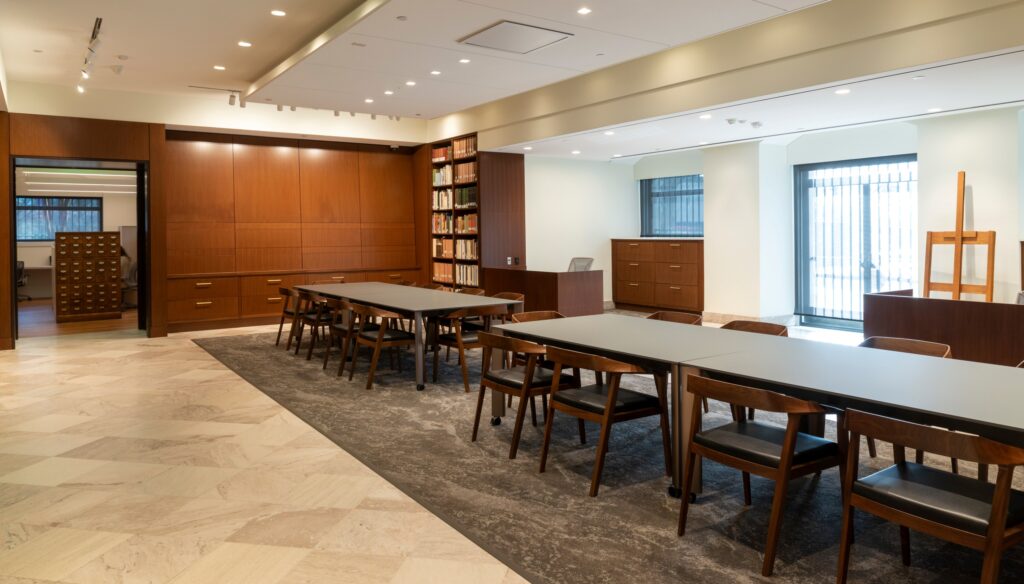
The Nancy Dorman and Stanley Mazaroff Center for the Study of Prints, Drawings, and Photographs opens. The new center is dedicated to the presentation, study, and preservation of the BMA’s 68,000-object collection of graphic art.
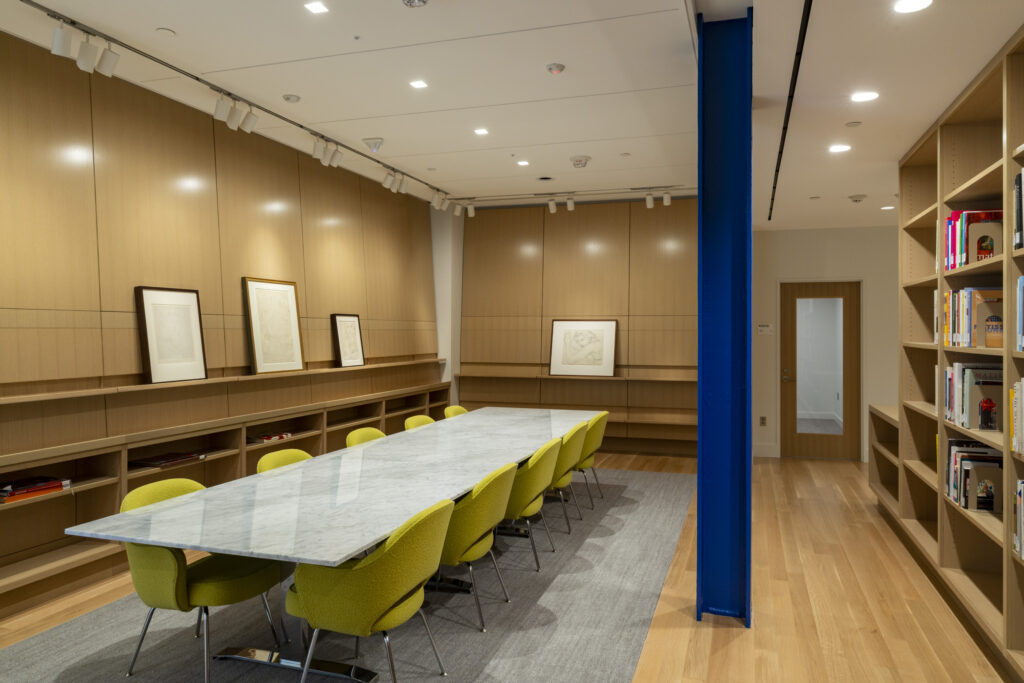
The Ruth R. Marder Center for Matisse Studies opens. The new center serves as a major resource for scholars and visitors interested in learning more about the French master’s practice.
2022
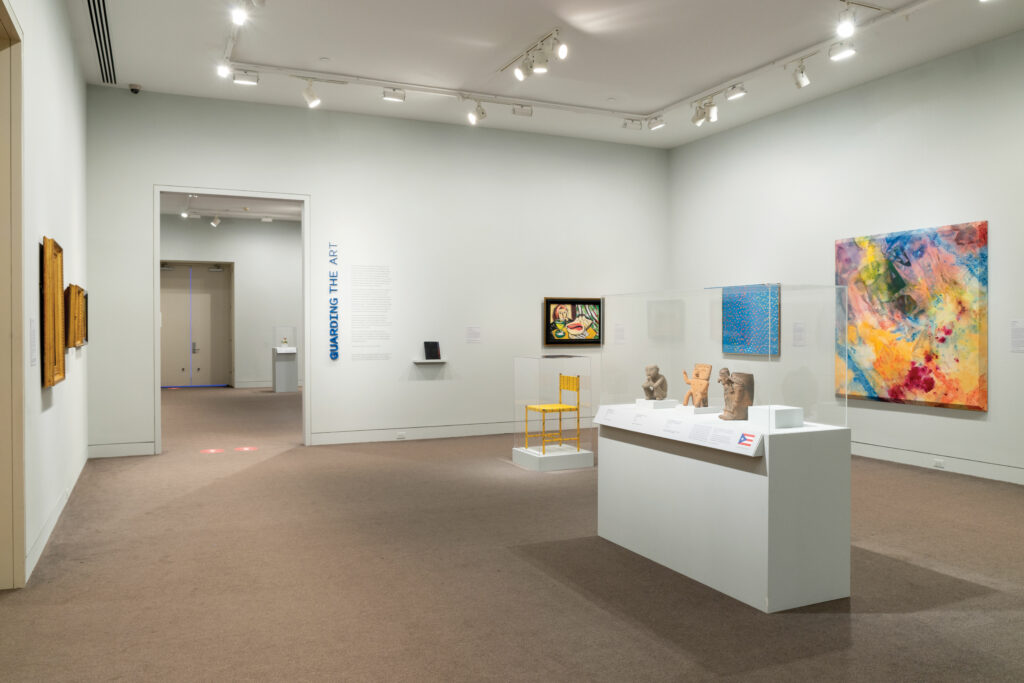
The BMA opens Guarding the Art, an exhibition curated by 17 BMA security officers, who were mentored by Dr. Lowery Stokes Sims and received guidance from Museum staff for a year. This groundbreaking exhibition receives considerable media attention. The initiative, the first of its kind, was conceived by BMA Trustee Amy Elias in conversation with Asma Naeem, then Eddie C. and C. Sylvia Brown Chief Curator.
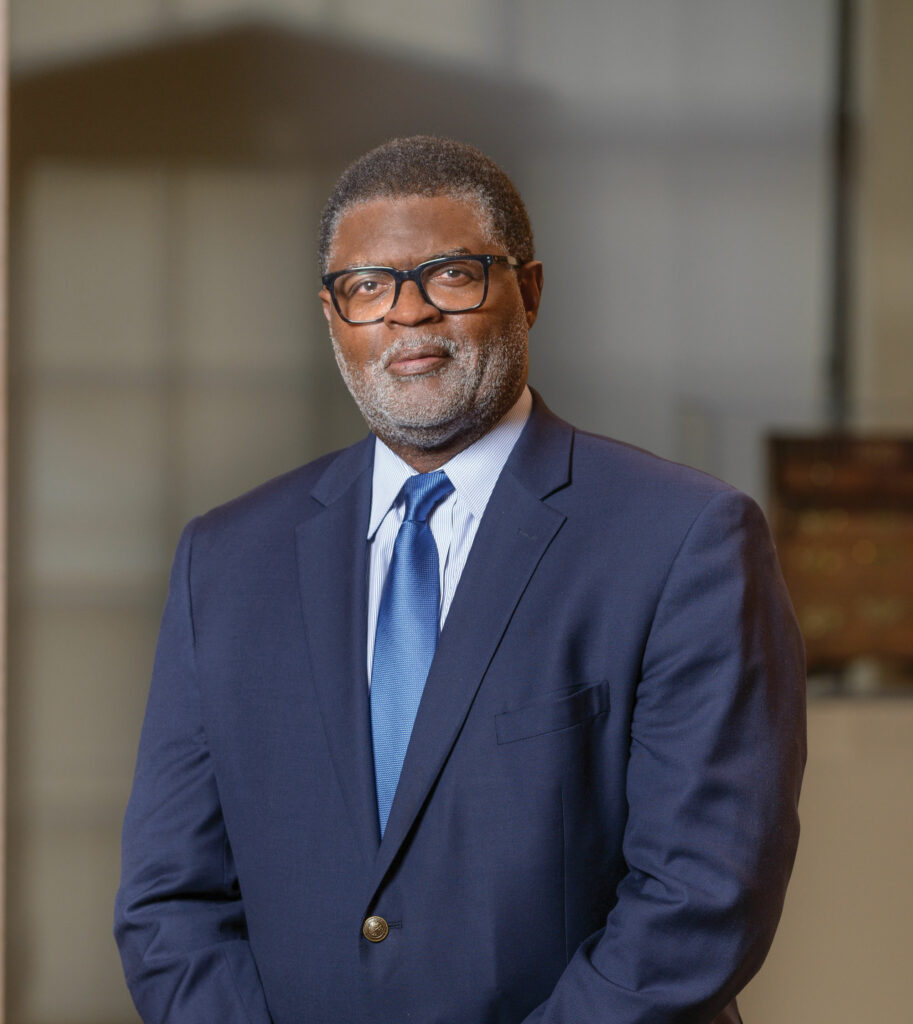
James D. Thornton is elected Board Chair. He is the first person of color to lead the BMA’s Board of Trustees. Since joining the BMA’s Board in 2004, he has led or played a pivotal role in numerous Board committees.
2023
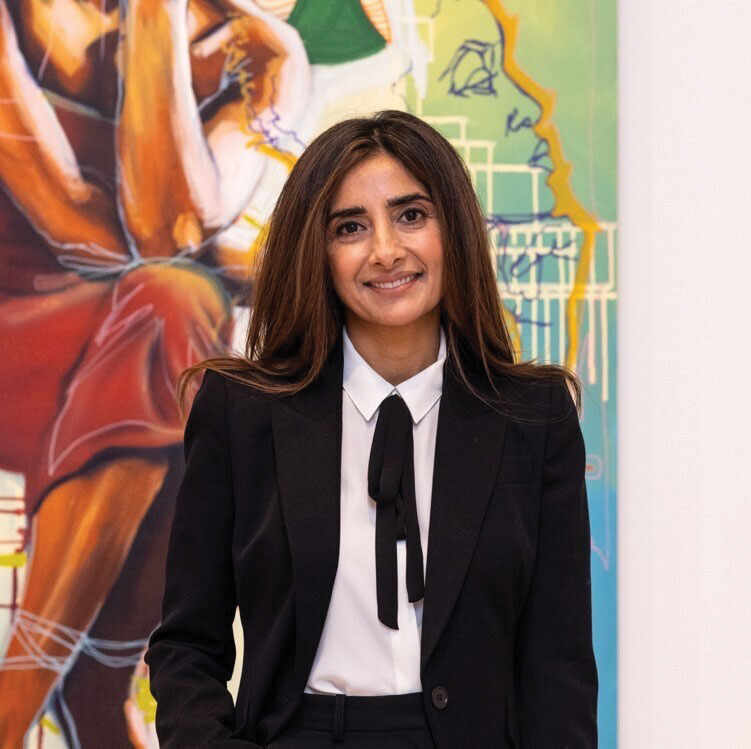
Asma Naeem is appointed Dorothy Wagner Wallis Director. She is the first person of color and the first person raised in Baltimore to lead the Museum. She was previously the BMA’s Eddie C. and C. Sylvia Brown Chief Curator and held the Interim Co-Director position with Christine Dietze before her appointment.
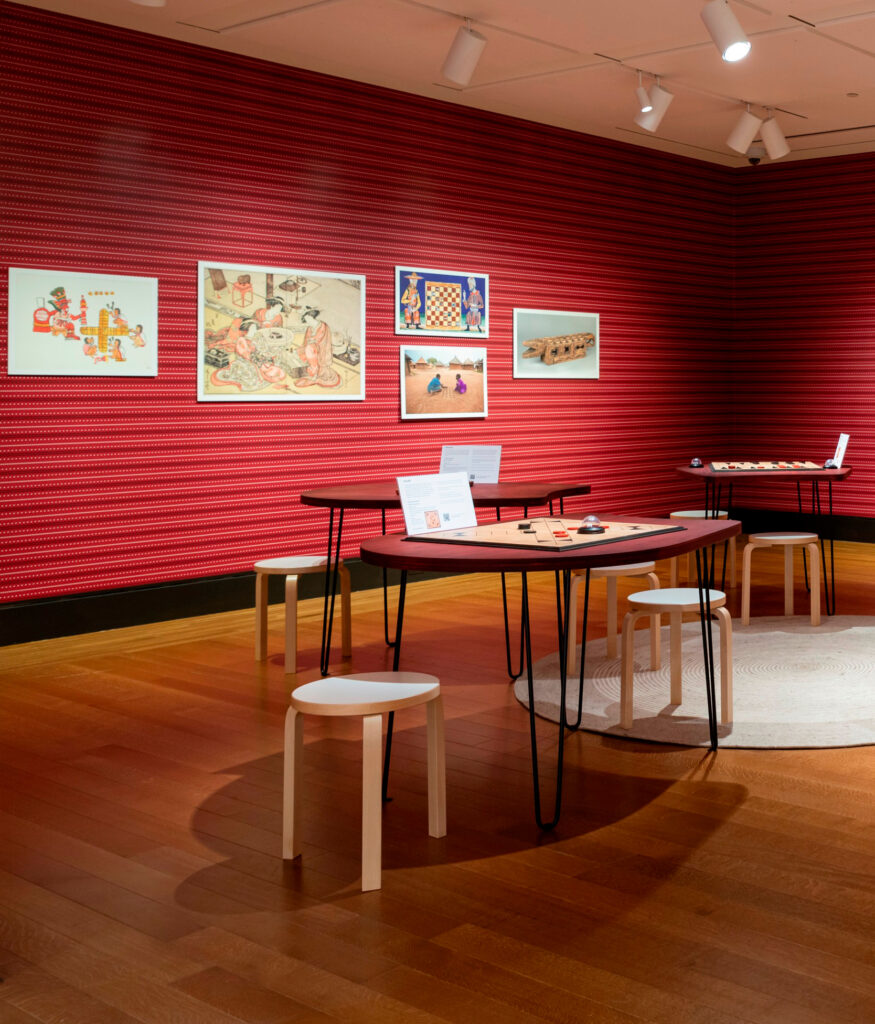
The newly renovated Patricia and Mark Joseph Education Center reopens. The center features three interactive installations commissioned by artist/educators Derrick Adams, Mary Flanagan, and Pablo Helguera, as well as updated art-making spaces and amenities to better serve students.
2024
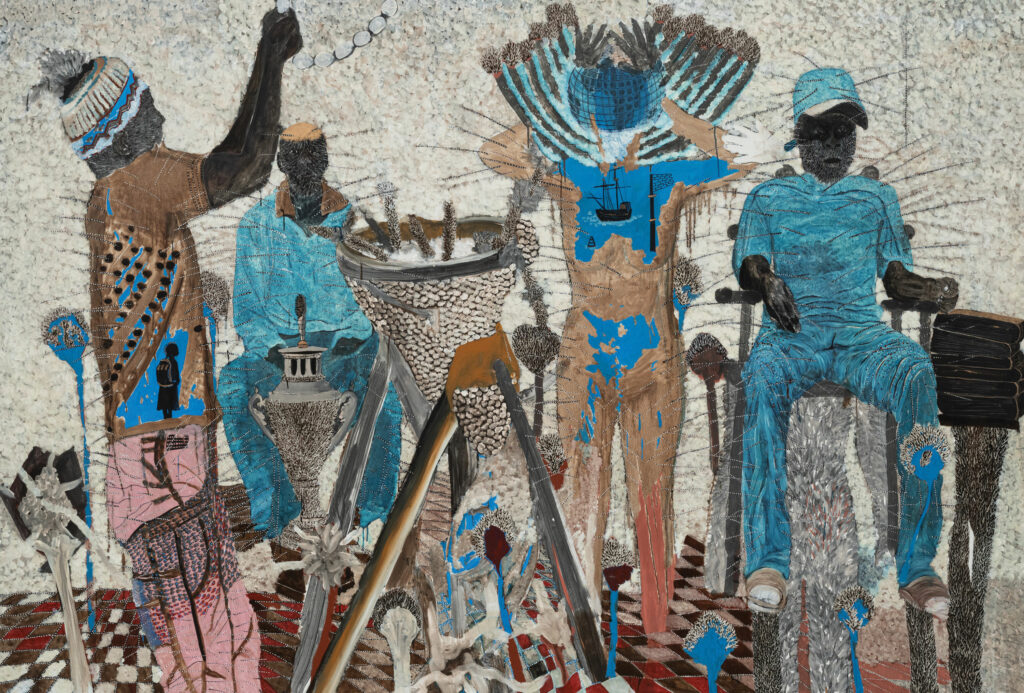
The BMA formalizes its commitment to a sustainable future with Turn Again to the Earth, an initiative that includes:
- an evaluation of internal BMA practices to support the creation of a sustainability plan for the Museum;
- a series of exhibitions and public programs that capture the relationships between art and the environment across time and geography;
- and a citywide eco-challenge led by the BMA that invites Baltimore and regional partners to engage in environment-related conversations and enact their own plans for a more sustainable future.
By engaging artists and city leaders, the Museum is a locus of creativity and conversation, enacting positive change. Join us in this critical effort by becoming a Member today.
All archival photographs are from the Archives and Manuscripts Collections at the Baltimore Museum of Art.


